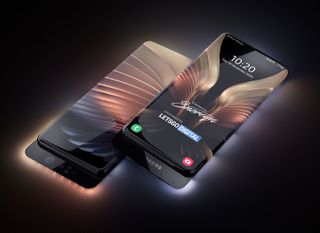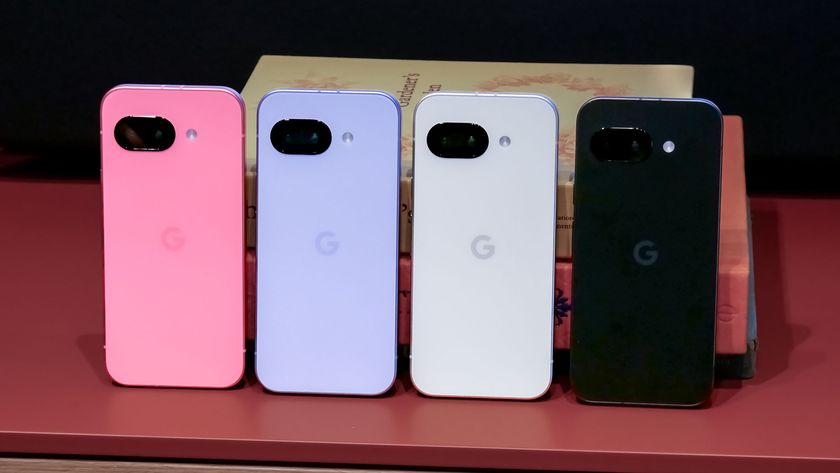Snapdragon 888: The biggest features coming to Android phones
Cameras, gaming and AI are a big focus for the Snapdragon 888

The Snapdragon 888 system-on-chip unveiled by Qualcomm this week should deliver a noticeable performance boost to next year's flagship Android phones. After all, this is Qualcomm's first 5-nanometer chip, meaning more transistors providing more power with greater efficiency. But that's not the story Qualcomm is dwelling on, as it talks up the merits of its latest mobile processing platform.
Instead, much of Qualcomm's focus with the Snapdragon 888 is to talk about how new additions to the chipset will improve your mobile photography and mobile gaming experiences — the kind of thing you're more likely to notice than whether an app launched a little bit faster on one phone or another.
- Best Android phones
- What are the best 5G phones?
- Plus: Apple's Mac M1 chip just humiliated the Surface Pro X
Think of it as Qualcomm's way of distinguishing itself from the A14 Bionic that powers Apple's latest phones or the Kirin silicon Huawei uses in its phones. Qualcomm doesn't mention any of its chip-making rivals by name. But the way it's presenting the Snapdragon 888 speaks volumes about the experiences it thinks phones powered by the new chip can provide.
Here's what you can expect from the Snapdragon 888 and when the new system-on-chip will start appearing in smartphones.
Qualcomm Snapdragon 888: Availability
Qualcomm says its Snapdragon 888 chipset is coming to Android phones in 2021, though it hasn't said exactly when. If past releases are any indication, though, you can expect the new chip to start appearing in leading Android phones during the first three months of the new year.
Samsung's next flagship will almost certainly be one of the first phones to sport a Snapdragon 888, as has been the case for the U.S. versions of all Galaxy S releases. That would put the new chip on track for the Samsung Galaxy S21, which is rumored to be launching earlier than usual — possibly as soon as January.

But Samsung will have company. At Qualcomm's annual tech summit where the Snapdragon 888 was introduced, Xiaomi said its Mi 11 phone will be one of the first to get Qualcomm's latest chip, though that phone is unlikely to ever reach the U.S.
Sign up to get the BEST of Tom's Guide direct to your inbox.
Get instant access to breaking news, the hottest reviews, great deals and helpful tips.
Qualcomm doesn't make announcements about which devices use its silicon, but the chip maker did provide a list of phone makers who've pledge to support the Snapdragon 888. Beside Xiaomi, that list includes Asus, Black Shark, Lenovo, LG, MEIZU, Motorola, Nubia, Realme, OnePlus, Oppo, Sharp, Vivo and ZTE.
Qualcomm Snapdragon 888: Performance
Performance may not be one of the major talking points around the Snapdragon 888's launch, but you should still expect big gains for the devices that use the chipset next year. As noted above, this is Qualcomm's first chip using a 5nm process, and that typically means greater power and efficiency.
Qualcomm's also come up with a new architecture for the chip, which will offer the first commercial CPU subsystem to be based on the Arm Cortex-X1. In addition to that prime CPU, which can top out at up to 2.84GHz, three Arm Cortex A-78 CPUs make up the performance cores, while four Arm Cortex-A55 comprise the efficiency cores.

In terms of performance numbers, Qualcomm says that the Kryo 680 in the Snapdragon 888 can deliver a 25% boost in overall CPU performance over the previous generation. The new CPU is 25% more power efficient than its predecessor, according to Qualcomm.
We'll need to benchmark a device powered by the Snapdragon 888 to see how that compares to current phones on the market. But a back-of-the-envelope calculation suggests that the chip will deliver a 25% boost over the Geekbench scores of some of the fastest Snapdragon 865-based phones we've tested. And that would pull it just about even with Apple's pace-setting A14-powered iPhone 12 lineup.
Qualcomm would counter that its chips are designed for sustained performance and not the short bursts that can propel phones to the lead of benchmark tests — a not so subtle dig at Apple's processors.
"Snapdragon is constructed for sustainable, usable performance," said Ziad Asghar, a vice president of product management at Qualcomm, during the Snapdragon 888 unveiling. We're looking forward to getting our hands on a Snapdragon 888 device to see if reality matches our math.
As for graphics, the Adreno 660 GPU included with the Snapdragon 888 is supposed to increase the speed of graphics rendering by 35% over last year's chip, with power efficiency improving by 20%. The performance gain is the biggest yet for the Adreno GPU, Qualcomm says, which bodes well for gaming on Snapdragon 888 phones.
Enhancement to the GPU also impact how graphics are displayed, with Qualcomm promising OLED display uniformity as well as picture quality improvements.
Snapdragon 888: 5G
5G continues to be a major focus of Qualcomm, so you can bet that it's a key part of the Snapdragon 888 story. The new system-on-chip includes an integrated modem, much like last year's Snapdragon 765G. Only this time, the modem is Qualcomm's 3rd generation Snapdragon X60 modem, which supports both sub-6GHz carrier aggregation and mmWave. That means a Snapdragon 888-powered phone will work with just about any operator's 5G network, including those that use dynamic spectrum sharing to extend 5G connectivity.
You should enjoy fast data speeds with the Snapdragon 888, at least where high-speed connectivity is available. The X60 is capable of 7.5 Gbps speeds. No 5G network is even close to delivering that right now, but it's nice to know that there's plenty of headroom for your phone's 5G performance as networks get faster.
One of the more intriguing parts of the Snapdragon 888's 5G support is the fact that it supports Global 5G multi-SIM, meaning you can expect 5G to extend to international roaming — at least if we're ever able to leave our houses again. 5G multi-SIM support also means that you can have separate numbers on the same phone.
Snapdragon 888: Camera features
Qualcomm's Snapdragon chipsets power photographic features, too, and the enhancements introduced to the Spectra 580 image signal processor (ISP) are particularly noteworthy.
For the first time, Qualcomm's offering a triple ISP that can capture images from three cameras at the same time; on previous Snapdragon Series 8 chipsets, Qualcomm had used a dual ISP.
The switch to a triple ISP means being able to simultaneous snap a trio of 28MP shots, all from different points of view. Or you could capture three 4K videos all once for a wide shot, a close up and a shot of the person doing the filming from the front camera. Thanks to triple concurrency, all cameras can run in the background at the same time, so that you can seamlessly switch between lenses without a noticeable lag.

The Spectra ISP is getting a speed boost of its own with the Snapdragon 888. Qualcomm promises speeds of 2.7 gigapixels per second, which is 35% faster than the Snapdragon 865's ISP. In one second, you'll be able to capture a burst of 120 photos.
In another first for Qualcomm's chips, the Snapdragon 888 can capture photos in 10-bit HDR HEIF. That allows cameras powered by the Spectra ISP to capture photos in more than one billion shades of color, enabling end-to-end 10-bit capture and display. Previously, the Snapdragon 8 Series' ISP could support 4K still image capture, and now that's being extended to video capture with the Snapdragon 888.
Cameras on Snapdragon 888 phones should also be more adept when the lights are turned low, as the chipset introduces a new low-light architecture. That should allow the camera to work in 0.1 lux, which a Qualcomm rep described as near darkness.
Snapdragon 888: Gaming
More people are playing mobile games, and Qualcomm's responded by ramping up the Snapdragon Elite Gaming features it includes with its high-end processors. That's Qualcomm's push to bring desktop-quality gaming to mobile, and in the past it's introduced capabilities such as desktop forward rendering for improved lighting and updateable GPU drivers.
In addition to supporting ultra smooth gaming capable of delivering gameplay at 144 frames per second, the Snapdragon 888 also adds variable rate shading for improved game rendering. That's a first for mobile devices, according to Qualcomm, and when it's implemented by game makers, it should boost gameplay performance by 30%. That means games will run smoother and longer without taxing your phone's battery as much.
Most games on your smartphone rely on a touchscreen interface to control the action, so Qualcomm is introducing a way to make your touches count. The company's Game Quick Touch feature can improve responsiveness by up to 20% in games running at 60 frames per second; in 120 fps games, response tims are cut by 10%.
Snapdragon 888: Artificial intelligence
In addition to all the other components on a Snapdragon 8 series chipset, you'll also find an AI engine that impacts multiple tasks across a smartphone. The Snapdragon 888 introduces a new 6th-generation AI Engine along with a Hexagon 780 processor that's more efficient and powerful than previous versions.

Many of the improvements to the Snapdragon 888's AI engine can be traced to a new architecture Qualcomm is using. The Tensor, Scalar and Vector AI accelerators have been fused in this version, allowing them to work together as one unit so they can share memory for faster performance.
That promises a number of benefits for AI-powered features. The Tensor Accelerator's Compute capacity has doubled, while the Scalar Accelerator is 50% more powerful. Qualcomm says you can expect up to a 3x performance per watt improvement from its last mobile processing platform, with the AI engine able to perform 26 tera operations per second (TOPS). For context, the Snapdragon 865 provided 15 TOPS, which was pretty impressive when it was introduced a year ago.
All of this translates to a more responsive device when it comes to working with the camera, voice assistant and any other part of the phone where responsiveness is key. The AI engine on the Snapdragon 888 can provide capabilities like noise suppression when you're on a phone call to cancel out ambient noise around you or AI-based upscaling on videos so that you can watch them at enhanced resolutions.
Last year's top-of-the-line Snapdragon chipset included a Qualcomm Sensing Hub to help with activities such as screen awake, lift and activity detection, and audio prompts. The Snapdragon 888 introduces the second generation version of that hub, with its own dedicated AI processor. That makes the revised Qualcomm Sensing Hub even more contextually aware of its surroundings.
A demo that Qualcomm showed off at its tech summit illustrated how the sensing hub could detect where you parked your car in a multi-level garage, all without any user input. The sensing hub can also detect different sounds like a baby crying and respond with an appropriate notification.
Snapdragon 888: Other features
We've talked about 5G, but that's only part of the Snapdragon 888's connectivity capabilities. This is a Wi-Fi 6-enabled device, as you might expect, so it will connect efficiently to Wi-Fi 6-ready networking gear. The Qualcomm FastConnect 6900 mobile connectivity system can support wireless speeds of up to 3.6 Gbps.
On the security front, the Snapdragon 888 supports features such as a hypervisor that can quickly switch between isolated OSes on your phone. (Think setting up work and personal profiles on phones that keep apps and other data localized to specific profiles.) This is also the first Content Authenticity Initiative-compliant smartphone camera for capturing cryptographically-sealed photos.
Perhaps one of the more noteworthy enhancements brought about with the Snapdragon 888 is Qualcomm's QuickCharge 5 technology. It's capable of supporting up to 100W chargers, with the promise of providing a 50% charge to a phone in 5 minutes. Even if your future phone doesn't recharge at that blistering speed, faster charging looks to be on the horizon with Snapdragon 888-powered devices that employ the latest version of QuickCharge.
Snapdragon 888: Outlook
While all those features give us an overview of what the Snapdragon 888 brings to the table, we're going to have to wait for a device powered by the new chip to fully appreciate its capabilities. Certainly, getting to test a Snapdragon 888-powered phone will let us compare Qualcomm's latest to the chips powering Apple's new phones.
But there's a lot to anticipate about the Snapdragon 888 beyond just speed improvements. The new camera capabilities in particular promise to push mobile photography forward, and the gaming features will further cement the smartphone's place as a device for serious gamers. Qualcomm has introduced a lot of key enhancements with the Snapdragon 888, and we're looking forward to see how that translates to new mobile experiences.
Philip Michaels is a Managing Editor at Tom's Guide. He's been covering personal technology since 1999 and was in the building when Steve Jobs showed off the iPhone for the first time. He's been evaluating smartphones since that first iPhone debuted in 2007, and he's been following phone carriers and smartphone plans since 2015. He has strong opinions about Apple, the Oakland Athletics, old movies and proper butchery techniques. Follow him at @PhilipMichaels.













